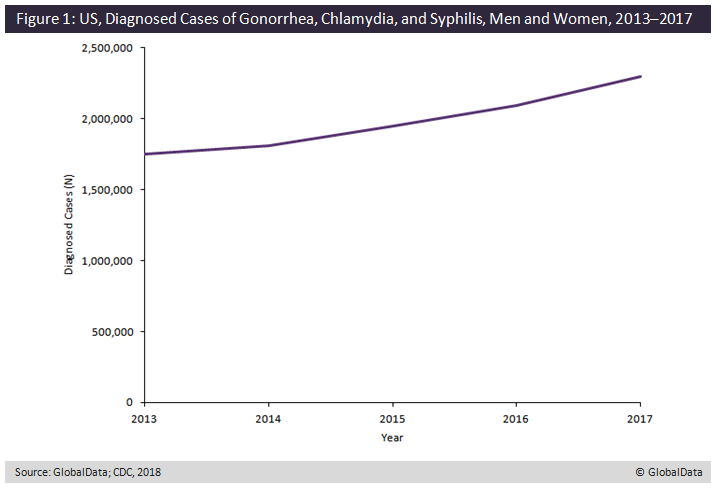
Recent data from the Centers for Disease Control show that nearly 2.3 million cases of gonorrhoea, chlamydia, and syphilis were diagnosed in the US in 2017. Figure 1 presents the diagnosed incident cases of gonorrhoea, chlamydia, and syphilis in the US from 2013–2017.
 There was a new record number of diagnosed cases of gonorrhoea, chlamydia, and syphilis in 2017, an increase of nearly 200,000 cases from 2016. This continued trend of sexually transmitted infection (STI) growth has been noted for some time and shows no sign of stopping. It is believed that reduced government funding for STI prevention programmes has contributed to this worrying trend.
There was a new record number of diagnosed cases of gonorrhoea, chlamydia, and syphilis in 2017, an increase of nearly 200,000 cases from 2016. This continued trend of sexually transmitted infection (STI) growth has been noted for some time and shows no sign of stopping. It is believed that reduced government funding for STI prevention programmes has contributed to this worrying trend.
Gonorrhoea, chlamydia, and syphilis are all sexually transmitted bacterial diseases for which treatments are available. Often, a person with one of these diseases may not show any symptoms, and thus will not receive a diagnosis or seek treatment. However, if these diseases remain undiagnosed and untreated, they can lead to severe complications and adverse health effects including infertility, stillbirth, and increased risk of human immunodeficiency virus (HIV).







